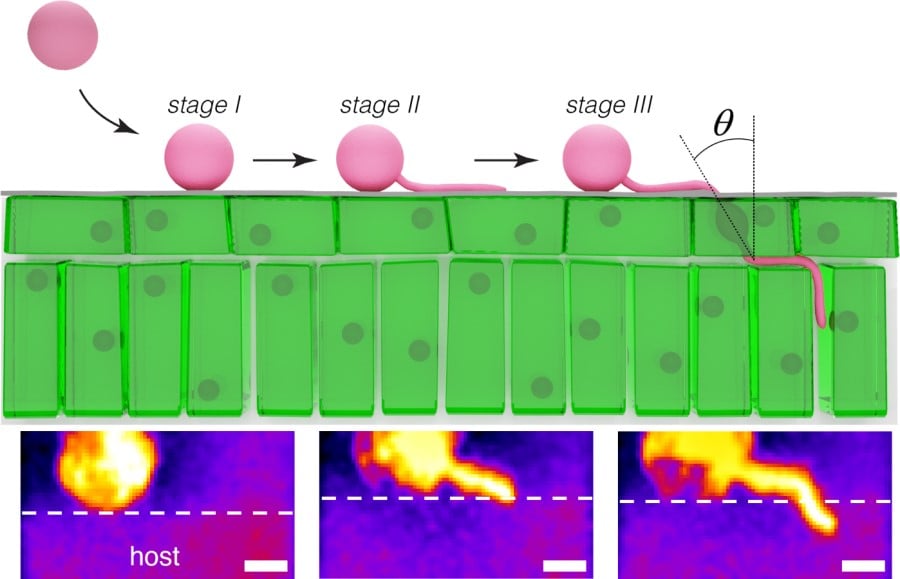
Potato blight has caused famine and misery for centuries. The most famous example was in Ireland between 1845 and 1850 when about 90% of the potato crop was lost. Many Irish died of famine or left the country. Ever since, it has been a constant battle against the notorious pathogen phytophthora infestans (literally plant destroyer). This can kill not only potatoes but also, for example, eggplants, tomatoes, cocoa, pepper and palms.
Controlling phytophthora is difficult, in part because the pathogen and its target (the plant) are in a perpetual arms race with each other. In order to become less dependent on pesticides, a great deal is being invested in the development of resistant crops. This is done by breeding plants and more attention is also being paid to new forms of mixed cultivation.
It is helping, but despite this, the damage remains significant. The economic cost of Phytophthora for potato cultivation alone is estimated at 6 to 7 billion euros each year.
A sharp knife
But an invention created by Wageningen University & Research (WUR) in The Netherlands offers hope. Experts from a variety of fields, ranging from cell biologists and physicists to plant disease experts, joined forces and first found out what Phytophthora’s main weapon is and then developed a green defensive wall. The research has been published in Nature Microbiology.

“We discovered that Phytophthora uses clever tricks to sharpen its tubular infection structure to then cut through the surface of the plant with a sharp knife. Using this strategy, Phytophthora is able to infect its host, without brute force and with minimal consumption of energy. This is the first time that this mechanism has been uncovered, and really a fundamental discovery,” Joris Sprakel, Professor of Physical Chemistry and Soft Matter, said in a press release.
Adhesive strength
Professor of Phytopathology Francine Govers immediately spotted opportunities to combat phytophthora more effectively, efficiently and sustainably over time without involving the usual suspects of chemistry and plant breeding. Govers: “The laws of mechanics tell us that Phytophthora is unable to penetrate the plant without first attaching itself tightly to the leaf surface.”
To test this idea, as a first proof of its feasibility, the researchers sprayed the leaves of potato plants with a non-toxic and inexpensive substance that minimizes the stickiness of the leaf. “This helped reduce the rate of infection by about 65%,” the WUR reports. “In an optimized trial on artificial surfaces, this effect even veered toward 100%.”
It now seems to be only a matter of perfecting the process in order to hand Phytophthora and the potato disease a major setback. The WUR sees it as a victory for science and proof that a multidisciplinary approach to problems can lead to breakthroughs.







